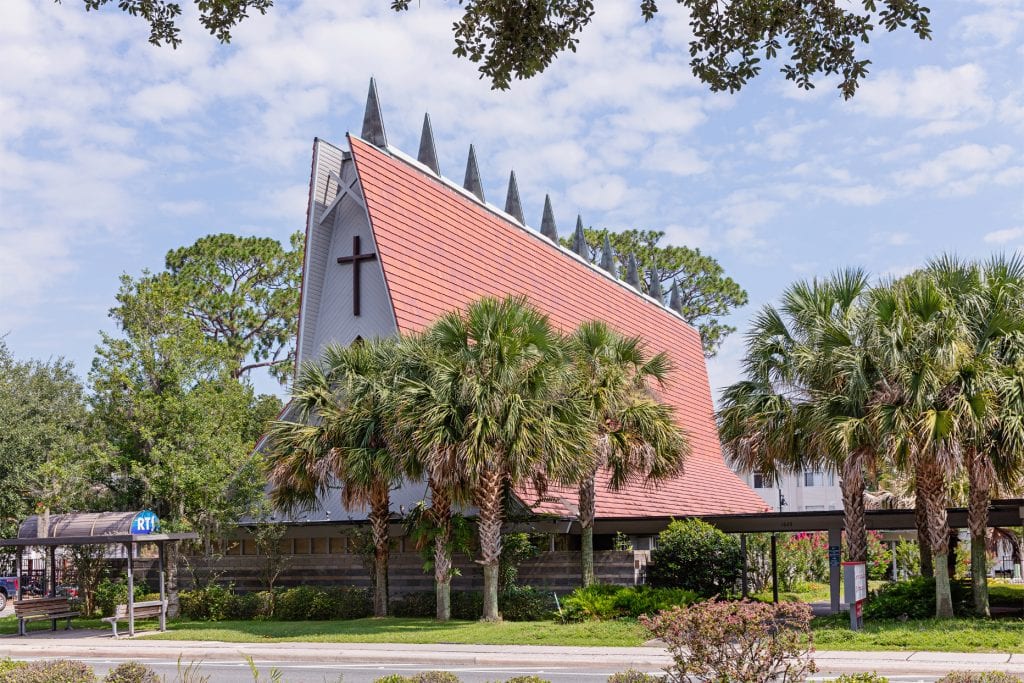By Megan Horan

Architecture is known for its ability to capture a moment in time. Gainesville’s moment was the mid-20th century, and many groups, including University of Florida faculty and students, have come together to take the steps preserve it through the Gainesville Mid-20th Century Cultural Resource Survey.
The project, through the collaboration of UF’s Historic Preservation Program (UF HPP), the city of Gainesville and local advocacy group Gainesville Modern, served to create a city-wide inventory and assessment of architectural, cultural and historical resources from around 1945 to 1975. Creating a survey is the first step in the greater preservation process. Before efforts can be made to preserve historically significant buildings, one must know what there is to work with in the first place.
Although Gainesville has five local historic districts and 34 structures listed on the National Register of Historic Places, previous surveys did not assess past the 1930s.
“Every city has a moment in time that defines its architecture,” UF HPP Director Morris Hylton III, one of the co-managers of the project, said. “For Gainesville, that is the mid-20th century when the population of the university and the city exploded. This post-World War II growth coincided with the adoption of modernism as one of the primary architectural styles that came to define the progress and optimism of the era.”
The study was completed in two phases, starting in 2017. Over time, the team prepared an inventory of potential locations to survey. The neighborhoods and buildings were then surveyed for historical integrity. Each neighborhood or building was identified as exemplary of one of four primary historic themes: civil rights, historic preservation, mid-century modern architecture and UF.

“The survey has identified many neighborhoods and individual buildings that should be designated local landmarks or listed on the National Register of Historic Places. Nominations for two churches have already been prepared by the UF Historic Preservation Project,” Hylton said. “This is really just the beginning to fully documenting and assessing the many cultural resources that make up the city’s 20th century heritage.”
The project, however, was not just a collective effort between organizations. According to DCP Adjunct Professor Linda Stevenson, who also co-managed the project, UF students taking classes from UF HPP and volunteers from the community also contributed greatly.
“This great, rich body of mid-century work is becoming quite important to the physical environment and the connection that people currently in the community have to the past,” Stevenson said. “You want community input to inform what gets examined and what the current community members value. This then becomes a great tool for educating people about the physical environment, turning them into advocates for it. In terms of education and civic pride, this really makes a difference.”
Stevenson said that she is proud to have had the opportunity to work with different communities to conduct a comprehensive examination of mid-century resources and look at how the design community in Gainesville’s post-war period had such a profound impact, ensuring that the high quality of their design work is acknowledged and celebrated. However, she also said that there is still work to be done.
“There are still more inventories to do, as well as continued advocacy and education,” Stevenson said. “Today, we must look to the past in order to start looking forward to the future.”
